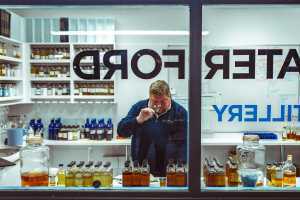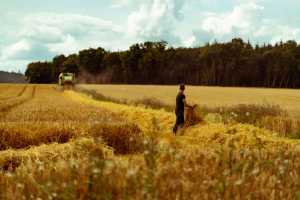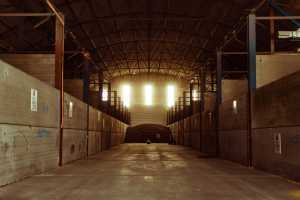TERROIR is that part-wholesome, part-pretentious concept that it is the land that makes the wine, right?
It makes sense. It feels right; that vines which achieve the struggle through the thin, rocky sides of the Cote d’Or’s mid-slope deliver some of Burgundy’s most characterful wines. Or that one could tell a Bourgogne Aligote from a Montrachet Grand Cru on account of the latter’s shallow and sundrenched soils.
But, could it work for malt whisky? Surely, barley is barley? And distilling anything at the sixty plus ABV threshold obliterates any nuances on flavour attributable to each crop? Depressingly, that school of thought would win you more friends in the whisky trade than it should; the extent to which terroir applies to whisky is one of the industry’s most divisible topics.
The proponents (terroir-ists?) arguably have history and distilling tradition on their side. Before whisky was laid down at any meaningful scale, Irish and Scottish crofters and farmers made their own.
They distilled with grain from their own farms. That barley varied from field to field, region to region. Batch sizes and inconsistency in distilling techniques - including the proportion or ‘cut’ of the spirit which was syphoned off for bottling - varied wildly.
Each hand-hammered and crudely assembled copper still nestled away in byre or under a floorboard still would yield a distinct spirit. Each farmer's whisky thus bore the hallmarks - be them favourable or otherwise - of their way of crafting it.
The whisky they distilled retained a regionality about them; every input still varied from place to place
And as the trade professionalised and became strictly licensed, home-based operations gave way to purpose-built distilleries. Those distilleries brought much needed consistency and standards to distilling and greater quality spirit followed.
But, mercifully, the whisky they distilled retained a regionality about them. Every input still varied from place to place. The great distilleries of Scotland’s hills and glens laid down an indisputably different spirit to those which lined the cobbled back-alleys of Dublin.
Then, the trade consolidated. Family-owned distilleries and blending houses were folded into ever larger corporations which largely did away with local sourcing.
Barley was sourced from ever farther afield and the quirky distilling habits of old yielded to ‘industry standard’ approaches honed for consistency.
So it is little wonder, in a sense, why many can’t get on board with this quaint notion that whisky is now suddenly artisanal and rooted in the land once more.
But, that won’t stop Ned Gahan from having a word. He heads up production at Waterford, a single malt distillery in Ireland’s south-east which has made clear that terroir is a hill they’re willing to die on. So, we plied him with a few drams of his own whisky to find out more…
It feels like almost every week brings news of a new distillery in Ireland. What’s Waterford’s story?
We started distilling in 2015 but the site had been a brewery since 1792 and was most recently owned by Diageo who made Guinness here until they shuttered it in 2013. Our current team got involved the following year and set about distilling whisky.

So, how does one end up as a Head Distiller?
I actually worked here when we brewed Guinness; I had been production-side here for Diageo for well over 15 years before Mark [Reynier - ex-owner of Scottish distillery Bruichladdich] looked at buying it.
I showed him around the place on his first visit in 2014. We’d been closed for about a year by that point. He needed a whisky distiller and I knew how to brew. Given that whisky is basically a distilled beer, I figured that I would work out the rest.
Almost every distiller seems to have a different view on how much of a whisky’s flavour comes from the wooden cask itself. What’s your take? Barley or barrel?
It’s complex. Barley is what gives malt whisky its maltiness - that’s the whole point of single malt whisky. It’s why it doesn’t taste like rye or bourbon. It’s the barley. The flavours derived from barley are what the barrels act upon.
If a whisky’s flavour came only from the wood, why not put neutral alcohol, vodka, in casks and mature that? Or water, with a few wood shavings?
Because the industry largely uses barley of little provenance – which is to say amalgamated nationally, and mixed with a great deal of imported grain – there is not much in anyone’s interest to suggest that regional flavours could be a thing, let alone on a farm by farm basis. Let alone terroir.
And, absolutely, casks play a part, as do other things like fermentation or when to cut the spirit. That’s why we spend a third of our entire production costs on the best casks in the world, perhaps more proportionally than any other distillery. It all matters – what you put into barrel especially so. That comes from the best barley, long and cool fermentation, and a slow and slow distillation. You have no choice but to get the malt right.
Waterford has released a plethora of ‘single farm origin’ bottlings. Before you even cask the spirit, how different is the raw spirit made from grain from each farmer?
Some are totally different and some are subtle, depending on the farm’s location, and depending on the harvest. To date, we have used about a hundred different farmers and each farms’ new make spirit is a different starting point; and I'm lucky enough to taste each one.
The differences depend upon numerous factors, including the growing year.
As part of our sensory work we’ve found a distillery style, you might say, across several farms on three soil series consisting of a malty, nutty, dried fruitiness, with cloves.
In our Seafield soil series, in which farms have sandier terroirs, the distillates carry a fruity, floral, and grassy character.
The Clonroche series, by contrast, features grain grown in loamy soils, and shows malty, cereal, and grainy flavours with a much more robust sweetness than Seafield.
But, barley is barley…? Nonsense.

But not everyone is convinced by Waterford’s (healthy) obsession with provenance. How do you win round the sceptics?
Our peer-reviewed academic work on terroir for one. We worked with researchers to test whether barley grown in different Irish counties - with different soils and weather conditions - would give us a different whisky. Unsurprisingly (to us), it did.
So, we’ve proven what we’re doing is true, is real. But to have true terroir, you must have traceability and transparency - so we can also show people where the raw materials are coming from, what it’s made with, the barrels used, the fermentation times, the whole lot.
We are going against the norm, and some people may not want to be open to what we are about.
We know it’s not for everyone, but the final proof should be in the tasting.

Distilling in rural Ireland is presumably not for everyone; tell us about the team at the distillery?
We have a mixture of local lads and lasses, though predominantly local. Many of the team worked at the site years ago, back when it was a brewery.
Our Chief Engineer, Anthony Brazil, his father worked here, as does his son; but Angelita, our in-house Terroir Specialist, comes from Brazil - the country, not the family.
And where does whisky go now?
Well, I can only speak for Waterford, but we’ll be keeping on our quest to unearth whisky’s natural, raw flavour, from Irish barley.

For more information, see waterfordwhisky.com
